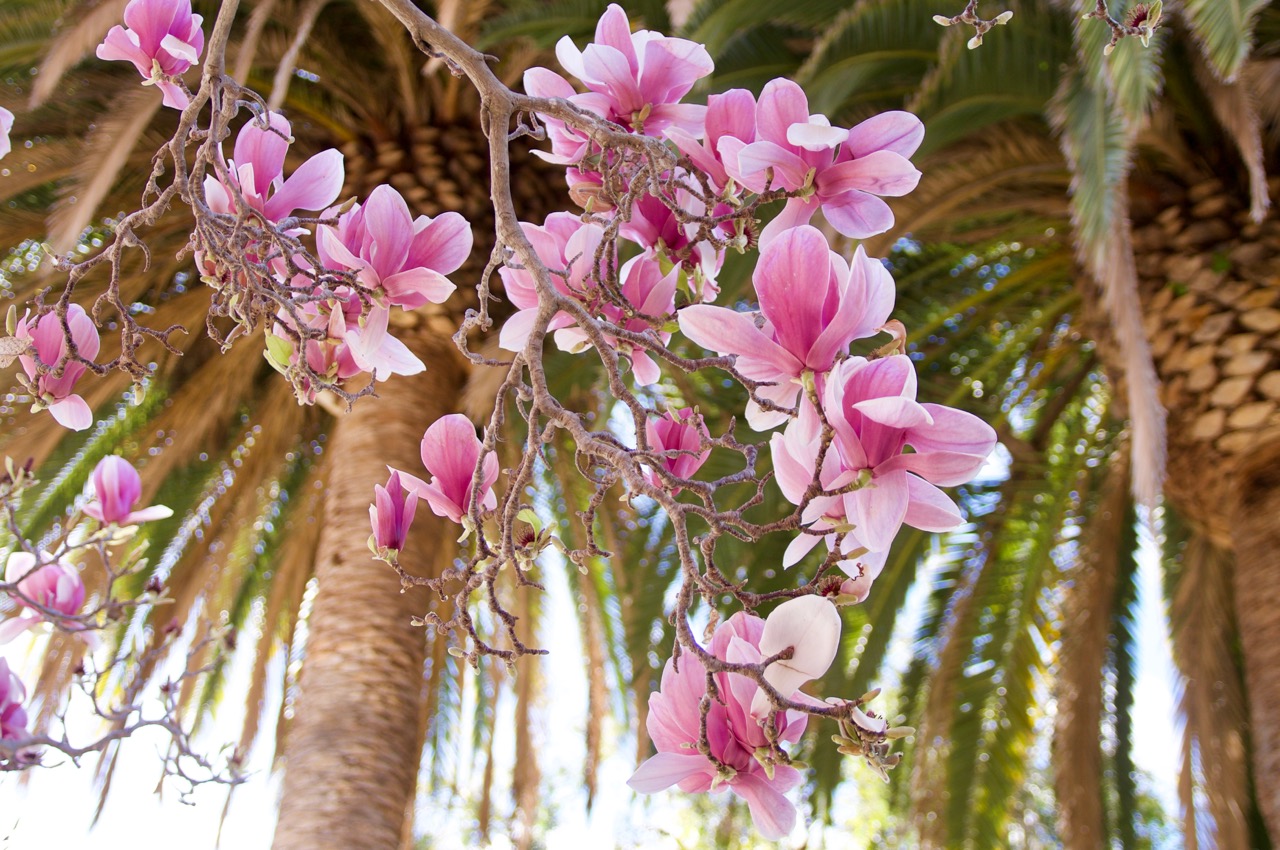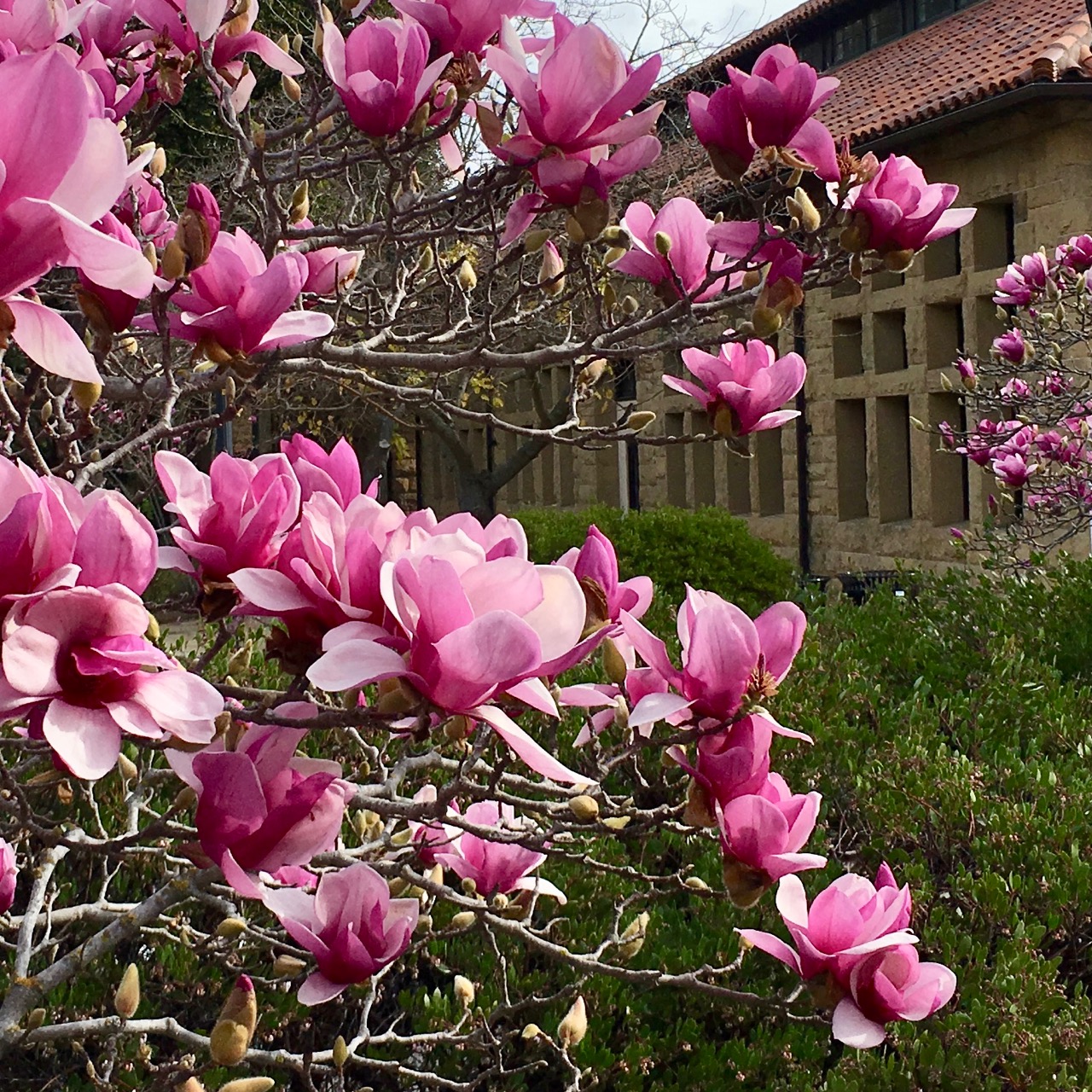Magnolia × soulangeana
 saucer magnolia
saucer magnolia


If you wander into the History Corner courtyard during winter break, you may witness the earliest of campus’s saucer magnolia blossoms. Tulip-shaped flowers start to appear on the otherwise bare tree against Building 200 sometimes as early as Christmas Day. The petals are generally not distinguishable from the sepals, and are called, happily enough, tepals. These are substantial and fleshy, pink on the outside and pale pink to white inside, contrasting handsomely with the buff sandstone. A compatriot in a nearby bed buds heavily among the kumquats. These fuzzy buds will burst open one by one. The flowers may last only a fortnight, but are abundantly produced and start becoming generally noticeable on campus mid-month, even before the acacias. This is the most commonly encountered deciduous magnolia on campus. After the flowers fade, large oval leaves develop; the trees rapidly sink into nondescriptness for the rest of the year.
Originating in the garden of retired French cavalry officer Étienne Soulange-Bodin near Paris around 1820, though likely to have occurred in Japanese gardens long before that, this group of crosses and back-crosses between southeastern China species M. denudata and M. liliiflora has elevated Soulange-Bodin’s name to eternal floral fame. Cultivated varieties are multitudinous and can be hard to tell apart. None have been documented for campus specimens; nurseries may not specify a cultivar name.
The most conspicuous examples are a group of eight where Dueña Street enters Escondido Mall and a trio near the Post Office flagpole. One is on the east side of the Bookstore. A majestic specimen stands at 821 San Francisco Court. In Palo Alto, a massive 11-trunked centenarian that bore about 2000 flowers was reported adjacent to 125 Middlefield Road, opposite Hawthorne Avenue, but was lost around 2005.
‘Genie’, a small-statured complex hybrid, has been recently seen. It has rounded tulip-shaped flowers that are a stunning dark plum-purple throughout. As they fade, the inside of the sepals may lighten. A young specimen is at 708 Salvatierra Street on the left of the front path. (Also see pink-and-white M. × soulangeana ‘Alexandrina’ on the right.) A taller ‘Genie’ is to the left of the garage at 714 East Meadow Drive in Palo Alto. ‘Genie’ is 56¼% Magnolia × soulangeana, 31¼% M. liliiflora (not counting the part in the soulangeana), 9⅜% M. campbellii, and 3⅛% M. sargentii (a single great-great-great grandparent).

Name derivation: Magnolia – Pierre Magnol, 1638–1715, botanist of Montpellier; soulangeana – see text above.
About this Entry: Authored Jan 2025 by Sairus Patel. Updated (Mar 2025, SP).


